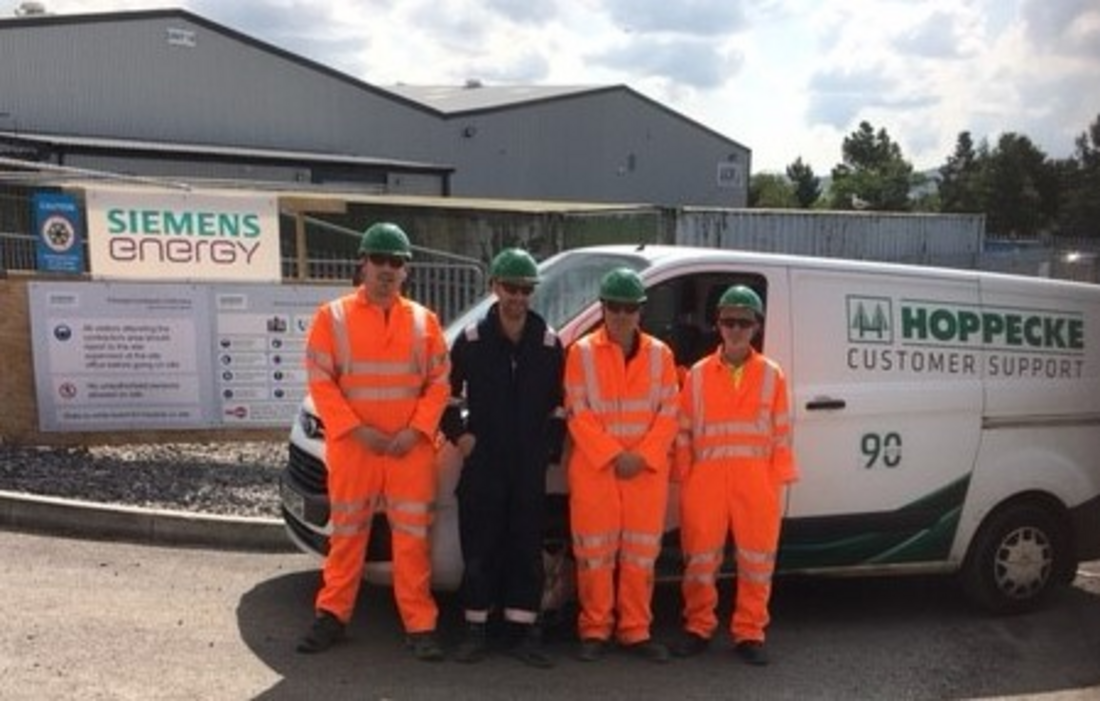In the logistics sector Hoppecke is synonymous with MHE. Forklift, PPT, VNA and reachtruck batteries and chargers. However, we’re also active in the reserve power arena. Currently, we’re supporting a Siemens Energy grid stabilisation project in South Wales.
First reserve power project with Siemens Energy
Our rail team works with Siemens Mobility and the Desiro UK and Desiro City product. However, this is our first reserve power project with Siemens Energy. It involves one of Britain’s first grid stabilisation facilities.
Siemens Energy is designing, manufacturing, installing and commissioning a new facility. It’s based at Rassau, Ebbw Vale. Welsh Power made the appointment after winning a contract to provide stability services to National Grid Energy System Operator.
Managing grid stability
Overall, the aim is to manage grid stability. This is essential for a net zero carbon energy system. Siemens Energy will install its rotating grid stabilisation technology. Incorporating a
synchronous condenser and flywheel, it provides inertia to strengthen the grid. The system will allow the grid to accept more renewable sources. At the same time, it will maintain the correct frequency of 50hz. This is difficult to do efficiently at present, as the big nuclear coal and gas power stations are retired.
Innovative technology
Fundamentally, the technology is making an impact. Why? Due to changes in our electricity system. There are fewer large spinning generators in fossil-fuelled power stations connected to the grid. Now, the focus is on renewable power.
Supporting a Siemens Energy grid stabilisation project
Our role was to supply and install 200 VR OPZV-1200 grid power cells. We competed the installation in three days. After power is restored, we’ll return to site for commissioning. Once operational, the Rassau facility will enjoy vital capabilities. It will be able to provide around 1% of the inertia required to operate National Grid securely. There will be zero emissions. Deployment is within 15 minutes of an instruction.
Pictured on site are Hoppecke engineers Damian Campbell, Colin Williams, Madjec Bowzak and Alan Humphries.
